9 Steps to Burn Fat Without Losing Muscle
Check out my client Miliam’s transformation where he maximized his gains by implementing the right workout and diet tips in his routine!
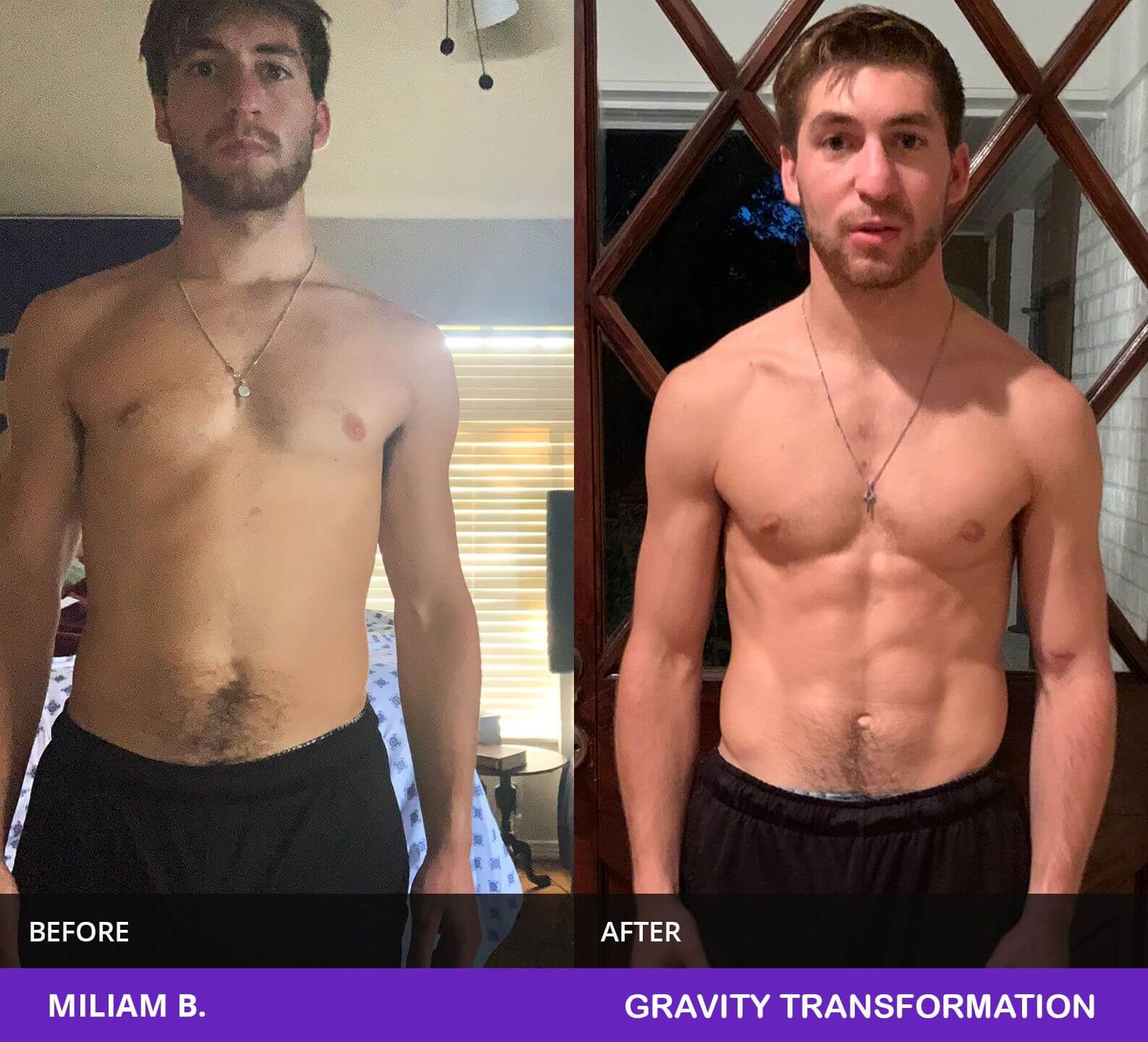
Learn exactly how to lose fat without sacrificing precious muscle mass during a cut or diet.
Believe it or not, you can even lose weight and build muscle at the same time.
Find out what the science says about burning fat and building muscle simultaneously.
This detailed body recomposition strategy can be used to get lean without losing muscle.
When most people lose fat, they also lose a lot of muscle, which is a huge problem.
The dream outcome for most people isn’t necessarily to just lose weight or burn fat. It’s actually to improve their body composition.
This essentially boils down to reducing body fat while also increasing muscle mass.
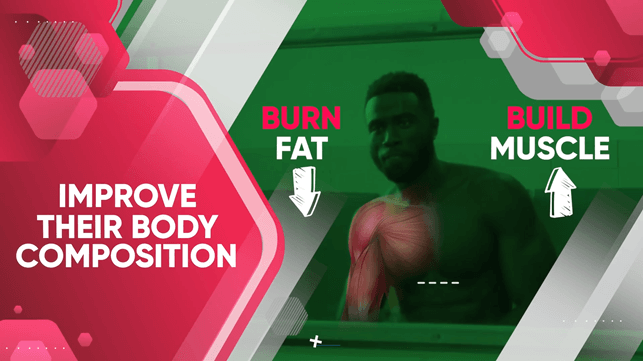
And if you lose muscle every time you try to cut away some fat you’re stuck in a cyclical process. Basically, you take one step back for every step you move forward.
So, to actually ensure progress I want to give you guys 9 rules that you should follow whenever you’re trying to reduce fat. This may be in your love handles, belly fat, or any kind of fat.
These rules will help you without wasting precious muscle mass in the process.
#1 Optimize your calorie intake
The first thing is to make sure you base your caloric intake on your current body fat percentage to maximize fat loss while minimizing muscle loss.
This is important because the less body fat you carry, the more prone you are to muscle loss.
On the other hand, if you have a high body fat percentage, you can diet much more aggressively without risking muscle loss.
This is because there’s more stored energy available for your body to tap into and use as fuel. So your body doesn’t need to break down muscle tissue to get that fuel.

So based on the scientific data here’s exactly how I would set up your calorie deficit as a function of your body fat percentage (1).
The table below shows that if you’re a man with a body fat percentage of 15-21%, you can reduce your calories by 20-30% from maintenance, without risking too much muscle loss.
On the other hand, if your body fat percentage is above 26%, you can reduce your calories by 40-50% without risking excessive muscle loss.
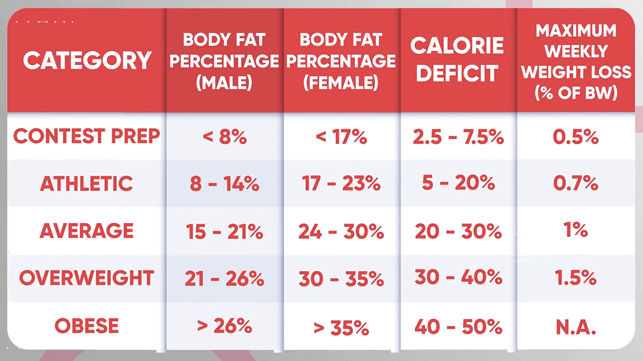
To figure out, approximately, your body fat percentage look at the image below and pick the range that looks most similar to your body.
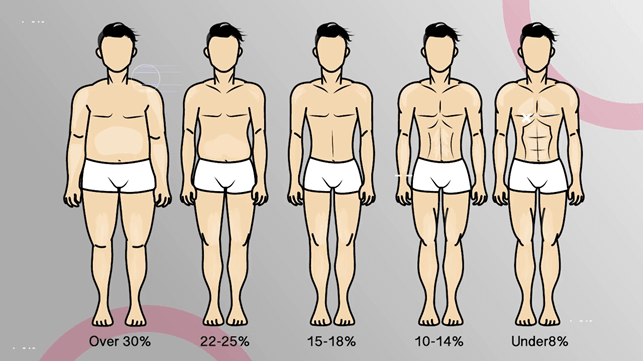
To figure out your maintenance calories you can either click here for our macro calculator, or Google one.
Just keep in mind that it’s totally fine to diet less aggressively than the numbers on these tables.
But to avoid muscle loss, I highly recommend not exceeding the calorie deficit ranges that you see for each category.
Also, since no macro calculator is perfect, you may want to keep track of how much weight you lose every week.
If you lose more weight than the numbers in the “Maximum weekly weight loss” column, then that could be a sign that you’re dieting too aggressively. (1)
#2 Maintain your training intensity
The next super important rule to follow is to maintain your training intensity as you cut down.
From the training side of things, this is by far the best thing you can do.
Unfortunately, when you’re in a calorie deficit, it can become harder to recover from your workouts.
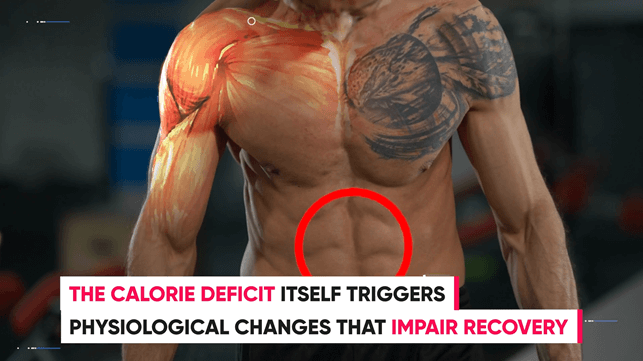
That’s because the calorie deficit itself triggers physiological changes that impair recovery.
For example, there will be a reduction in testosterone and IGF-1 production along with a simultaneous increase in cortisol. (2)
All of these changes are far from ideal for muscle growth and recovery. So most people will adjust their workout to make up for their reduced energy levels and their reduced recovery capacity.
The big problem is that, usually, people do this by reducing their training intensity. In other words, by reducing the amount of weight they lift.
And that’s a HUGE mistake because there is a very close correlation between strength and muscle mass (3).
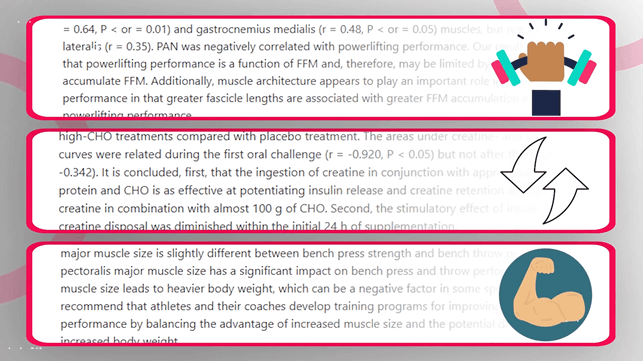
Your ability to maintain muscle while you cut is closely related to your ability to maintain strength while you cut.
So even though you will likely lose some strength as you diet, you shouldn’t willingly reduce your weight load every week because you have less energy.
You should fight to maintain that same intensity throughout your cut. Almost in the same way that you would train if you were trying to gain strength.
Only reduce the weight when you physically can’t lift the weight for the intended rep range that you’re going for.
Instead of reducing intensity to match your lower energy levels, it’s a better idea to reduce your rep and set volume during a cut.
For example, before your cut, you might have been doing 225 for 10 reps.
But during your cut you can’t do more than 6 reps. I’d rather you keep the 225 and fight for those 6 reps.
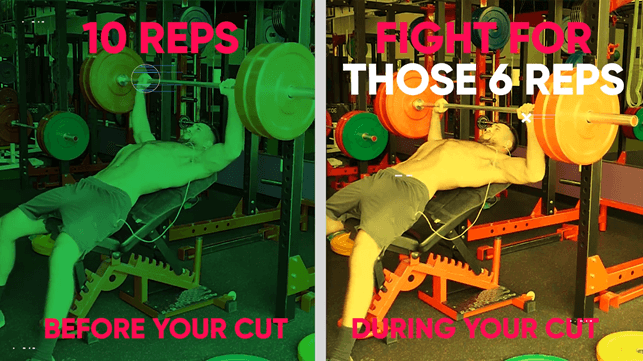
Of course, if you keep dieting and your rep range drops to 2 or 3 reps then you will have to drop the weight.
But only drop the minimum amount of weight you need to get your reps back above your target rep range.
#3 Calorie cycling
Another eating strategy that you should use is calorie cycling. This is basically eating more calories on some days and fewer on others.
So let’s say that to lose fat you need to stay under an average of 2,300 calories per day.
Instead of maintaining the same deficit every day, you could have 2 low-calorie days of 1,400 calories, for instance.
That would allow you to have 2,660 calories on the other days. Meanwhile, you’ll create the same total calorie deficit at the end of the week.
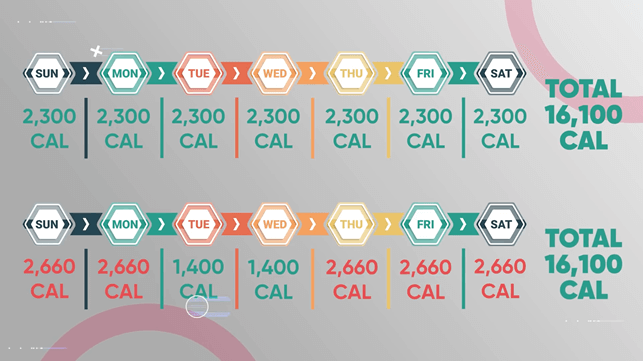
Research shows that cycling like this improves diet adherence, diet satisfaction, and weight loss compared to continuous calorie restriction. (4)
Calorie cycling may also help you maintain muscle mass as you’re burning fat. This is because when you lift weights, you stimulate protein synthesis which leads to muscle recovery and growth.
It’s been shown that muscle protein synthesis is elevated by 50% 4hrs after heavy weight training and 109% after 24 hrs. (5)
However, after longer periods, like 36hrs, protein synthesis rates drop to only a 14% increase above baseline. (6)
This means that your muscles are in an optimal muscle-building state for about 24 hours after your workout.
You can take advantage of this with calorie cycling. Just eat more calories on workout days and fewer calories on the days that you rest.
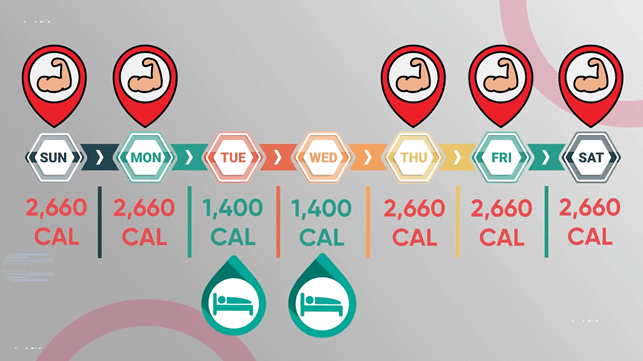
#4 Don’t ditch fat
You’ll also want to make sure that your diet contains enough fat.
A lot of people make the mistake of going on a low-fat diet. Or they arbitrarily try to avoid fats since “fats make you fat”, right?
Well, not exactly. Fats can not only be good for fat loss, but they’re also essential for optimal hormone production.
Specifically, testosterone is very negatively affected by fat intakes below 20% of your total daily caloric intake.
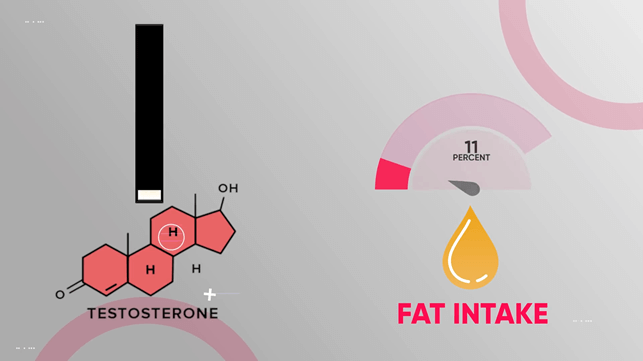
In a systematic review and meta-analysis, men were first put on a high-fat diet with 40% of the calories coming from fat. (7)
Then they transitioned to a low-fat diet (20% of the calories).
The researchers found that the low-fat diet decreased testosterone levels by 10-15% on average.
Vegetarians that were on low-fat diets were most vulnerable to testosterone losses. Some experienced up to a 26% reduction in testosterone levels.
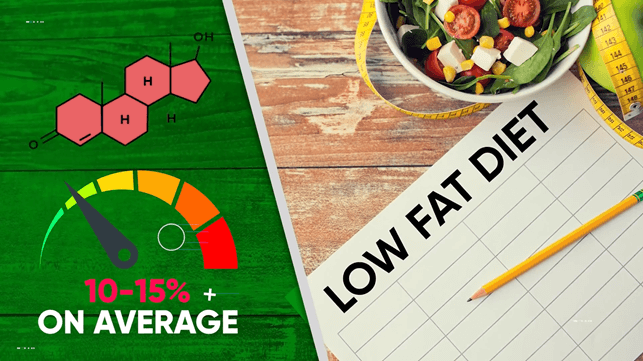
So make sure at least 20-35% of your diet calories come from fats.
An easy way to check if you’re getting enough is by multiplying your body weight times 0.2.
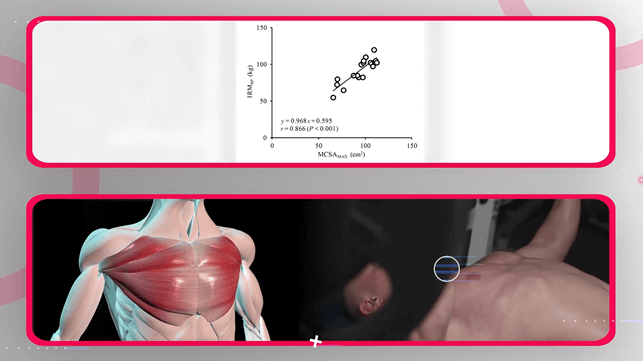
That’s close to a 100% correlation. So if you want to gain muscle, focus on getting stronger by simply increasing the weight you use over time.
Consistently adding a small amount of weight, like the 2½ pound plates, on each side of the bar every now and then will add up to big strength and size gains over time.
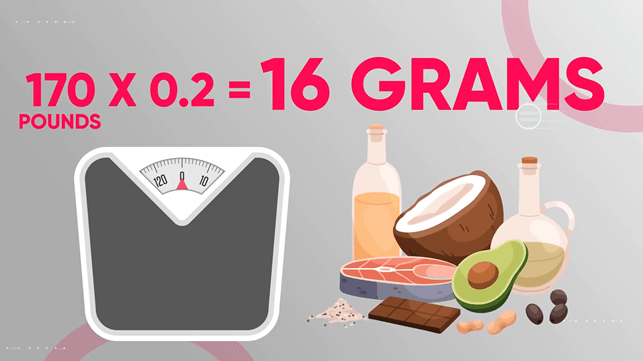
If you’re under that amount in grams of fat per day, you may want to consider upping your fat intake.
Make to also include enough omega-3 fatty acids. Research shows that consuming more omega-3’s improves exercise performance, muscle growth, and lean body mass. (8)
#5 Avoid too much cardio
Next, let’s talk about cardio. You’ll want to avoid doing excessive amounts of cardio.
That’s because that can make maintaining muscle much more difficult during a cut.
As mentioned, maintaining strength levels throughout a cut is one of the best things to do to maintain muscle mass.
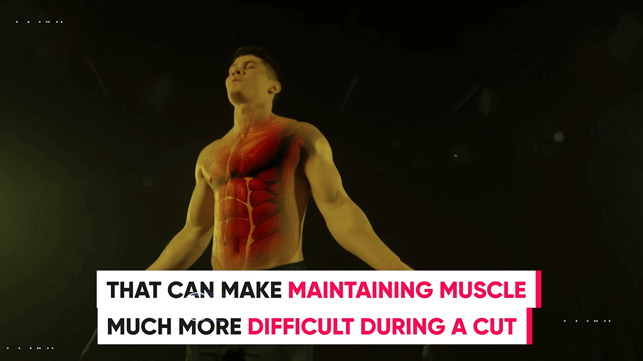
If you’re already in an energy deficit, and then you’re also overdoing it with cardio, it’ll be even harder to be fully recovered after your strength training workouts.
This is actually something known as the interference effect. A meta-analysis shows that it reduces muscle growth effect size by up to 39% (1).
That’s why, many times, it’s better to perform low-intensity cardio when you’re cutting down. This can be brisk walking instead of running, for instance.
Walking most likely won’t interfere with your weight training as much as running.
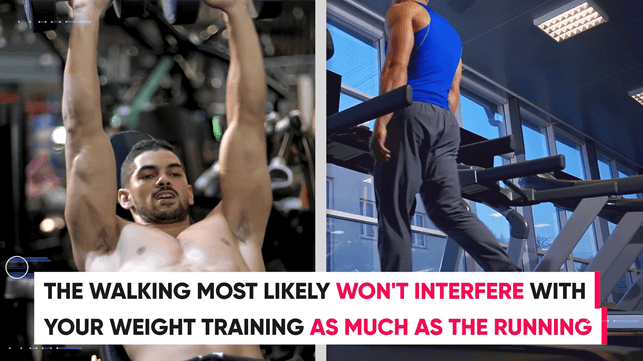
Cardio also decreases mTOR which is essential for muscle growth. It also increases AMPK which is catabolic, meaning it’s bad for muscle growth.
So when trying to burn extra calories, it’s often better to look closer at your diet rather than doing more cardio.
#6 Limit alcohol consumption
The next important tip is to either limit the amount of alcohol you drink or avoid it altogether.
This is because alcohol impairs fat loss and also leads to muscle wasting.
For example, research shows that as acetate enters your blood, fat burning is highly suppressed.
This causes most of the fatty acids in your blood to be stored as fat. (9)
Combine that with the fact that you’re more likely to eat high-fat processed foods after a few drinks…

Also, if acetate isn’t used for energy soon after you drink, it can be converted into fat. This is another reason why alcohol has such a high potential to make you gain fat.
From a muscle maintenance perspective, alcohol is detrimental because it impairs protein synthesis.
One study found that nine servings of alcohol post-workout decreased protein synthesis by 24%. (10)
Alcohol suppresses the anabolic or muscle-building response in skeletal muscle and could make recovery and adaptation to training much harder.” (11)
#7 Check your fiber and protein intake
Next, make sure you get enough fiber and protein because doing so will help you burn fat and preserve muscle.
Both protein and fiber help increase feelings of fullness.
Without eating enough protein during a cut you will absolutely lose muscle mass. So make sure that you’re getting at least 0.8 grams of protein per pound of body weight.

Fiber is not only good for your health and body composition, but it’s also highly satiating.
Research shows that for every 14 extra grams of fiber people consume, food intake tends to reduce by around 10%. (12)
Fiber prolongs fullness by slowing down digestion. Once it enters the large intestine, fiber leads to the production of short-chain fatty acids. These are a type of fat that enhances fullness.
Assuming you don’t have any digestive issues, it seems ideal to aim for around 30-38 grams of fiber per day.
That might sound like a lot. But it’s actually not that much compared to the amount of fiber our ancestors ate.
For example, scientists estimate Australian Aboriginals ate between 40-80 grams of fiber per day. (13)

And other hunter and gatherer groups in northern parts of Mexico would consume up to 225 grams of fiber per day. (14)
So, it’s getting at least 38 grams of fiber daily is perfectly doable, especially if you’re eating lots of vegetables.
#8 “Break-fast”
Since protein is so important, a super easy tip is to eat a high-protein breakfast, like eggs.
And when I say “breakfast”, if you’re intermittent fasting, your breakfast would literally be whenever you break your fast.
The evidence shows that eggs are excellent for burning fat while preventing muscle loss.
One egg contains about 6 grams of protein. And that protein is high-quality since it contains all nine essential amino acids making it a complete protein source.
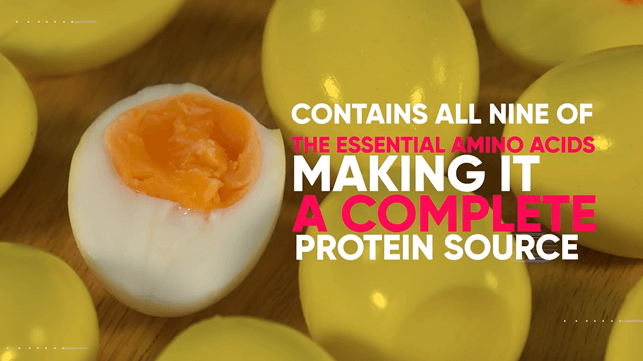
On top of that, it’s one of the world’s best sources of leucine, which is one of the most important amino acids for muscle growth.
That’s because it activates mTOR, which is the primary muscle-building pathway in the body.
Aside from benefiting muscle mass, the eggs’ high-protein content makes them also amazing for losing weight. This is especially true when eaten for breakfast.
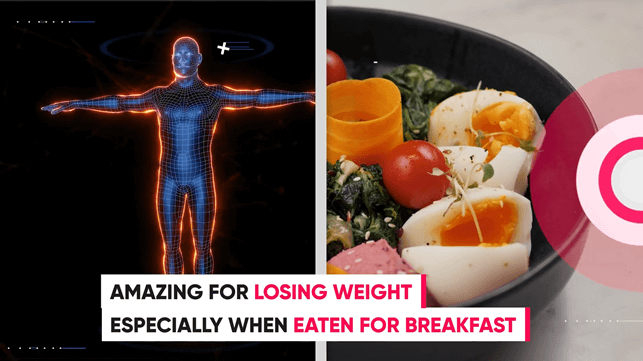
For example, research links the regular consumption of an egg-based breakfast to increased weight loss over time. (15)
That’s most likely because having eggs for breakfast raises levels of peptide YY and glucagon-like peptide-1 (GLP-1). These are two hormones that regulate appetite and promote feelings of fullness. (16)
#9 Keep a consistent eating schedule
Last but not least it’s a good idea to try to maintain a consistent eating schedule to burn fat and retain muscle.
Research shows that being inconsistent with your eating schedule increases hunger and cortisol while impairing insulin sensitivity and the thermic effect of food. All of these effects can impair fat loss. (17)
An increase in cortisol tends to impair belly fat burning. This partially explains why people with chronically elevated cortisol levels are characterized by abdominal obesity. (18)
So, don’t eat six meals today, three tomorrow, and one the day after that. Keep it consistent and do your best to spread your protein intake more evenly throughout the day.
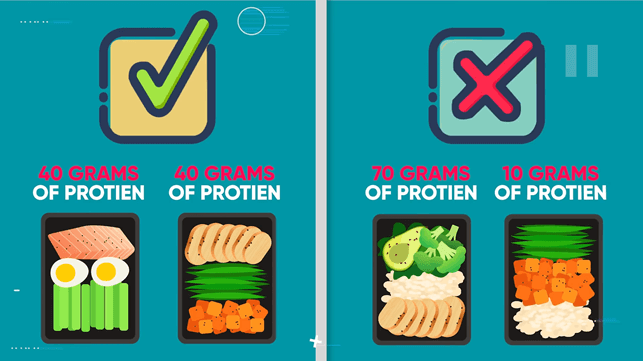
Even if you fast for 16hrs, and have 2 meals during your 8-hour feeding window, a more even distribution of protein in each meal is better than skewing the protein intake in just one of the two meals.
So just like with your workouts, consistency with your diet can really help.
Concluding notes
So that about wraps it up guys. One last thing that I will say is to have realistic expectations.
I know on Instagram it looks like everyone but you is maintaining a shredded 6% body fat, with full-looking muscles year-round, all naturally. But this isn’t realistic.
When you cut and you do everything right, you will still lose some muscle especially as natural.
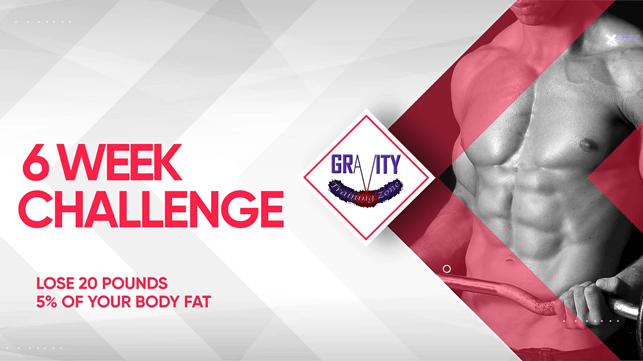
The point is to lose the least amount possible and these tips will definitely help.
If you want any extra help with your diet or workout plan, I have everything you may need. From courses to recipe books to one-on-one coaching.
All you have to do is click the link below to find out more.
References
- 2012 meta-analysis. How I would set up your calorie deficit as a function of your body fat percentage. https://pubmed.ncbi.nlm.nih.gov/22002517/
- A calorie deficit can trigger physiological changes that impair recovery. Such as a reduction in testosterone and IGF-1 levels and an increase in cortisol.
https://www.ncbi.nlm.nih.gov/pmc/articles/PMC3569090/
https://www.ncbi.nlm.nih.gov/pmc/articles/PMC2673798/
https://pubmed.ncbi.nlm.nih.gov/20368473/
- There is a very close correlation between strength and muscle mass.
https://pubmed.ncbi.nlm.nih.gov/24169471/
https://pubmed.ncbi.nlm.nih.gov/10956365/
https://pubmed.ncbi.nlm.nih.gov/11990746/
- Calorie cycling improves diet adherence, satisfaction, and weight loss compared to continuous calorie restriction.
https://pubmed.ncbi.nlm.nih.gov/24829732/
https://pubmed.ncbi.nlm.nih.gov/23591120/
- “Muscle protein synthetic rate is elevated in humans by 50% at 4hrs following a bout of heavy resistance training. And by 109% at 24hrs following training.”
https://pubmed.ncbi.nlm.nih.gov/8563679
- At an average time of 36hrs post-exercise, MPS in the exercised arm returned to within 14% of the control arm value.
https://pubmed.ncbi.nlm.nih.gov/8563679
- Low-fat diets appear to decrease testosterone levels in men.
https://pubmed.ncbi.nlm.nih.gov/33741447/
- Research shows consuming more omega-3’s improves exercise performance, muscle growth, and lean body mass.
https://link.springer.com/article/10.1007/s11332-016-0322-9
https://www.ncbi.nlm.nih.gov/pubmed/30052800
https://www.ncbi.nlm.nih.gov/pubmed/26679702
- As acetate enters your blood, fat burning is majorly suppressed. This causes most of the fatty acids in your blood to be stored as fat.
https://pubmed.ncbi.nlm.nih.gov/10539756/
- Nine servings of alcohol post-workout decreased protein synthesis by 24%.
https://www.ncbi.nlm.nih.gov/pmc/articles/PMC3922864/
- “Alcohol ingestion suppresses the anabolic response in skeletal muscle. It may therefore impair recovery and adaptation to training and/or subsequent performance.”
https://www.ncbi.nlm.nih.gov/pmc/articles/PMC3922864/
- Fiber is highly satiating. For every 14 extra grams of fiber people consume, food intake tends to reduce by around 10%.
https://pubmed.ncbi.nlm.nih.gov/11396693/
- Scientists estimate Australian Aboriginals ate between 40-80 grams of fiber per day.
https://pubmed.ncbi.nlm.nih.gov/19087457/
- “the overall dietary intake of fibre from all sources ranges between 150-225 g/d for an adult male.”
https://sci-hub.se/10.1017/s0007114510000966
- Research links the regular consumption of an egg-based breakfast to increased weight loss over time.
https://www.ncbi.nlm.nih.gov/pmc/articles/PMC4863262/
- “egg breakfast is associated with an increase of serum PYY and GLP-1”.
https://pubmed.ncbi.nlm.nih.gov/24923232/
- Being inconsistent with your eating schedule increases hunger while impairing insulin sensitivity, and the thermic effect of food. All of these can impair belly fat loss.
https://pubmed.ncbi.nlm.nih.gov/15220950/
https://pubmed.ncbi.nlm.nih.gov/15085170/
https://pubmed.ncbi.nlm.nih.gov/25755093/
https://pubmed.ncbi.nlm.nih.gov/25545767/
- An increase in cortisol tends to impair belly fat burning. This partially explains why people with chronically elevated cortisol levels are characterized by abdominal obesity.
My passion for fitness began when I was 14 years old. I naturally fell in love with training and haven’t stopped since. At 18 years I acquired my first personal training certification from ACE after which I opened my first of 3 transformation studios in 2011. I love to share my knowledge through personal training, my online courses, and youtube channel now with over 3,000,000 subscribers! I can happily say that we've helped over 15,000 people get in great shape over the years. I'm always here for my customers so if you need help don't hesitate to send your questions to support@gravitychallenges.com

